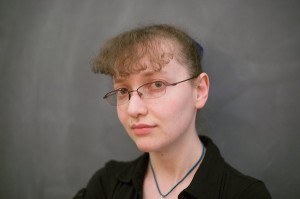[bibtex key=Hamkins2014:MultiverseOnVeqL]
This article expands on an argument that I made during my talk at the Asian Initiative for Infinity: Workshop on Infinity and Truth, held July 25–29, 2011 at the Institute for Mathematical Sciences, National University of Singapore, and will be included in a proceedings volume that is being prepared for that conference.
Abstract. I argue that the commonly held $V\neq L$ via maximize position, which rejects the axiom of constructibility $V=L$ on the basis that it is restrictive, implicitly takes a stand in the pluralist debate in the philosophy of set theory by presuming an absolute background concept of ordinal. The argument appears to lose its force, in contrast, on an upwardly extensible concept of set, in light of the various facts showing that models of set theory generally have extensions to models of $V=L$ inside larger set-theoretic universes.
In section two, I provide a few new criticisms of Maddy’s proposed concept of `restrictive’ theories, pointing out that her concept of fairly interpreted in is not a transitive relation: there is a first theory that is fairly interpreted in a second, which is fairly interpreted in a third, but the first is not fairly interpreted in the third. The same example (and one can easily construct many similar natural examples) shows that neither the maximizes over relation, nor the properly maximizes over relation, nor the strongly maximizes over relation is transitive. In addition, the theory ZFC + “there are unboundedly many inaccessible cardinals” comes out as formally restrictive, since it is strongly maximized by the theory ZF + “there is a measurable cardinal, with no worldly cardinals above it.”
To support the main philosophical thesis of the article, I survey a series of mathemtical results, which reveal various senses in which the axiom of constructibility $V=L$ is compatible with strength in set theory, particularly if one has in mind the possibility of moving from one universe of set theory to a much larger one. Among them are the following, which I prove or sketch in the article:
Observation. The constructible universe $L$ and $V$ agree on the consistency of any constructible theory. They have models of the same constructible theories.
Theorem. The constructible universe $L$ and $V$ have transitive models of exactly the same constructible theories in the language of set theory.
Corollary. (Levy-Shoenfield absoluteness theorem) In particular, $L$ and $V$ satisfy the same $\Sigma_1$ sentences, with parameters hereditarily countable in $L$. Indeed, $L_{\omega_1^L}$ and $V$ satisfy the same such sentences.
Theorem. Every countable transitive set is a countable transitive set in the well-founded part of an $\omega$-model of V=L.
Theorem. If there are arbitrarily large $\lambda<\omega_1^L$ with $L_\lambda\models\text{ZFC}$, then every countable transitive set $M$ is a countable transitive set inside a structure $M^+$ that is a pointwise-definable model of ZFC + V=L, and $M^+$ is well founded as high in the countable ordinals as desired.
Theorem. (Barwise) Every countable model of ZF has an end-extension to a model of ZFC + V=L.
Theorem. (Hamkins, see here) Every countable model of set theory $\langle M,{\in^M}\rangle$, including every transitive model, is isomorphic to a submodel of its own constructible universe $\langle L^M,{\in^M}\rangle$. In other words, there is an embedding $j:M\to L^M$, which is elementary for quantifier-free assertions.
Another way to say this is that every countable model of set theory is a submodel of a model isomorphic to $L^M$. If we lived inside $M$, then by adding new sets and elements, our universe could be transformed into a copy of the constructible universe $L^M$.
(Plus, the article contains some nice diagrams.)
Related Singapore links:





